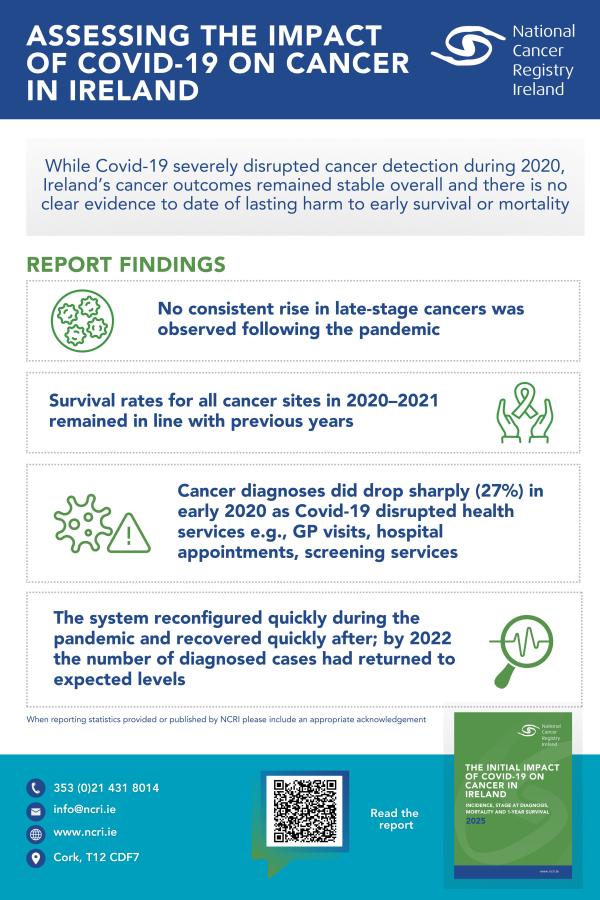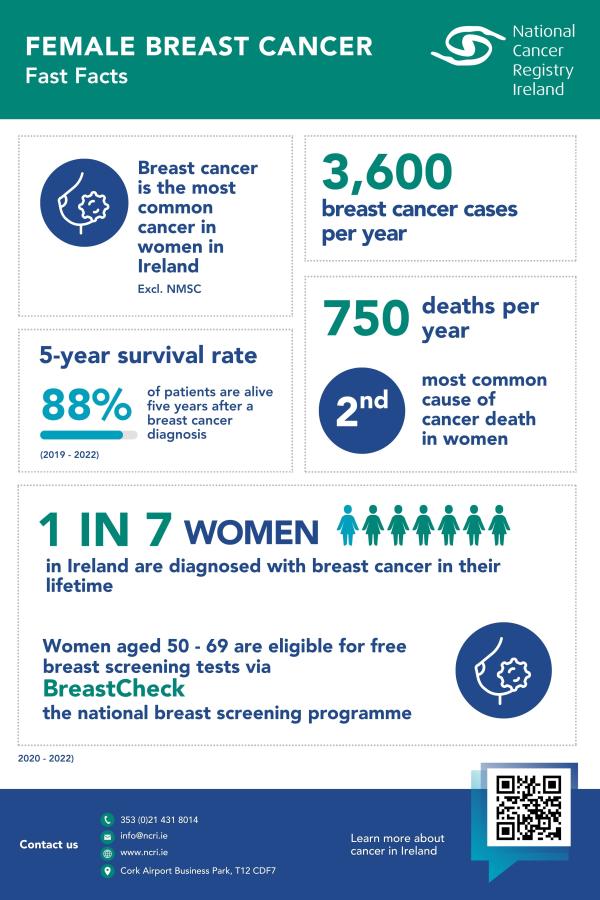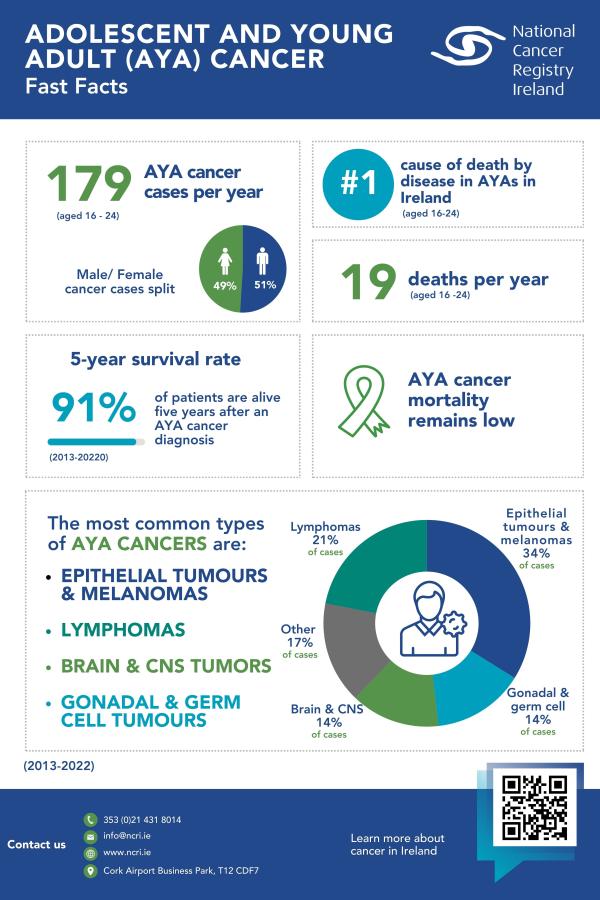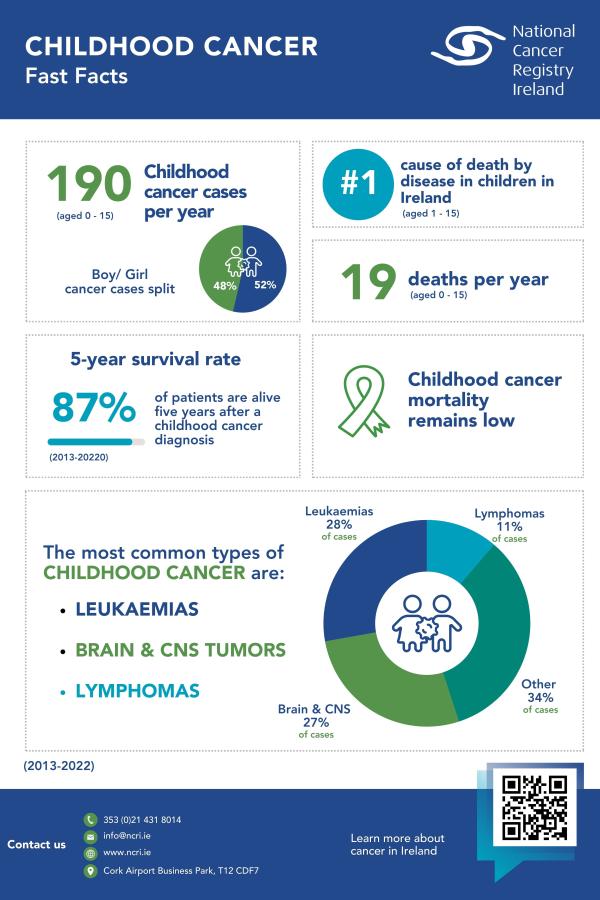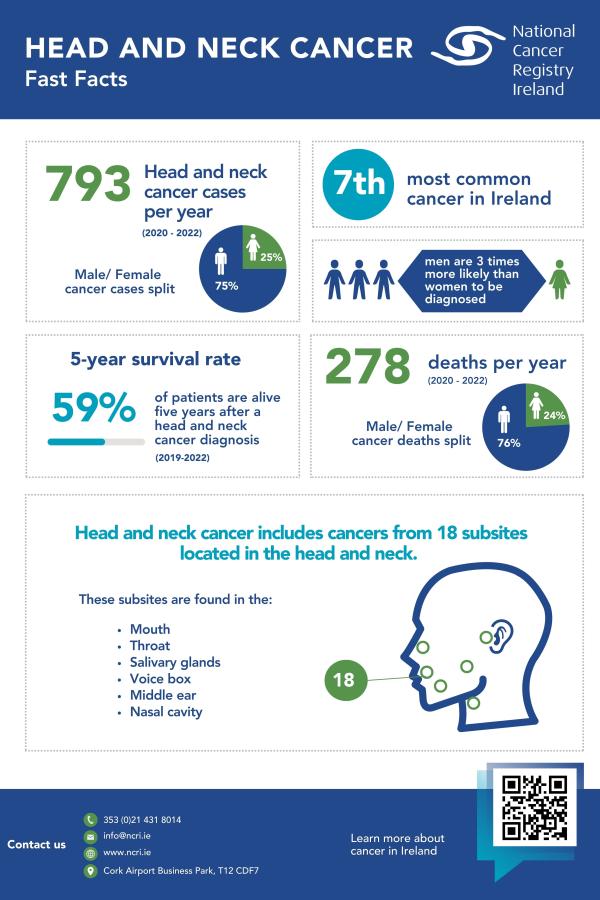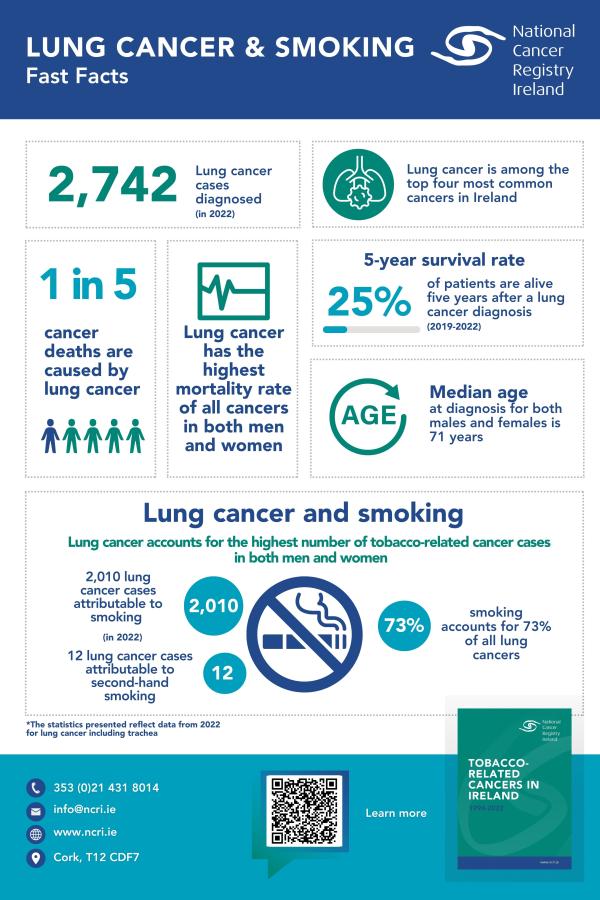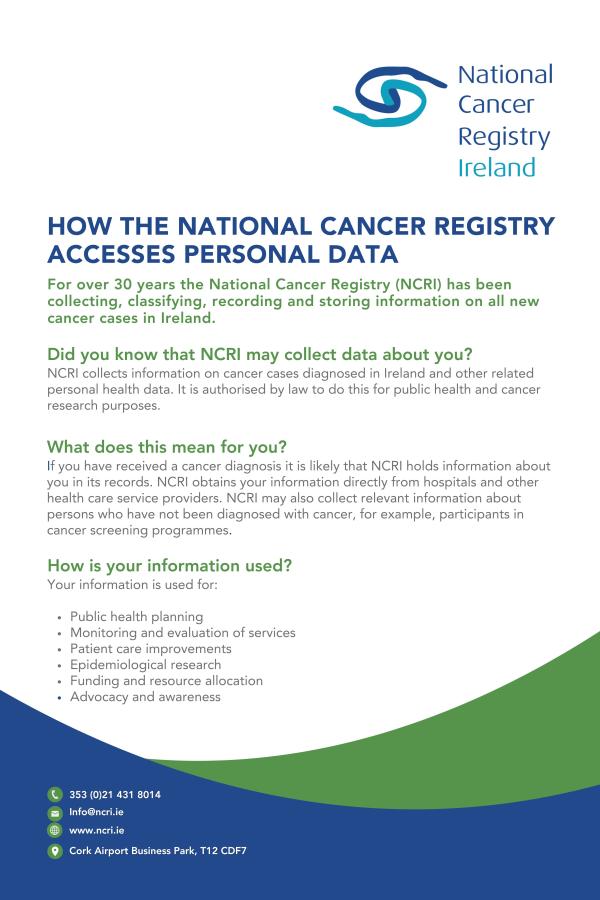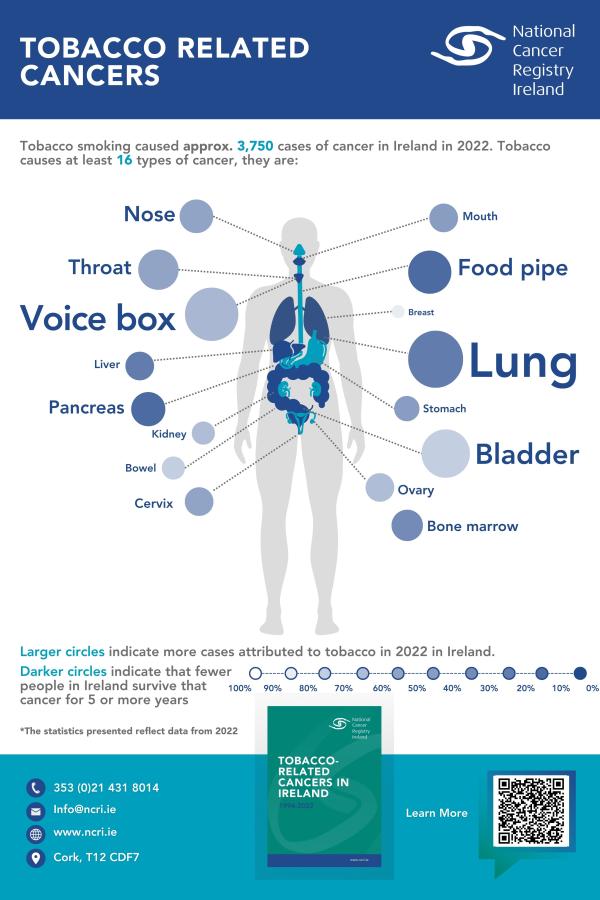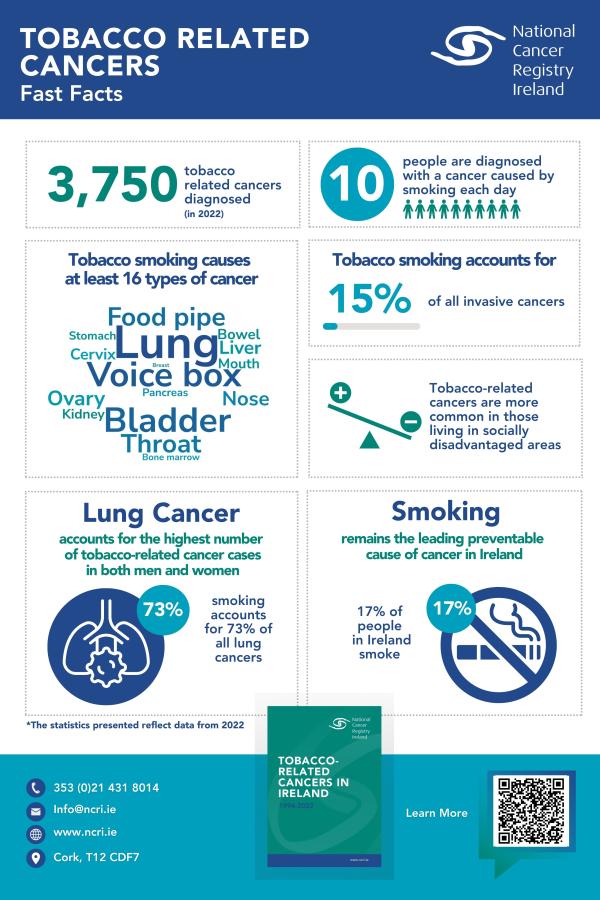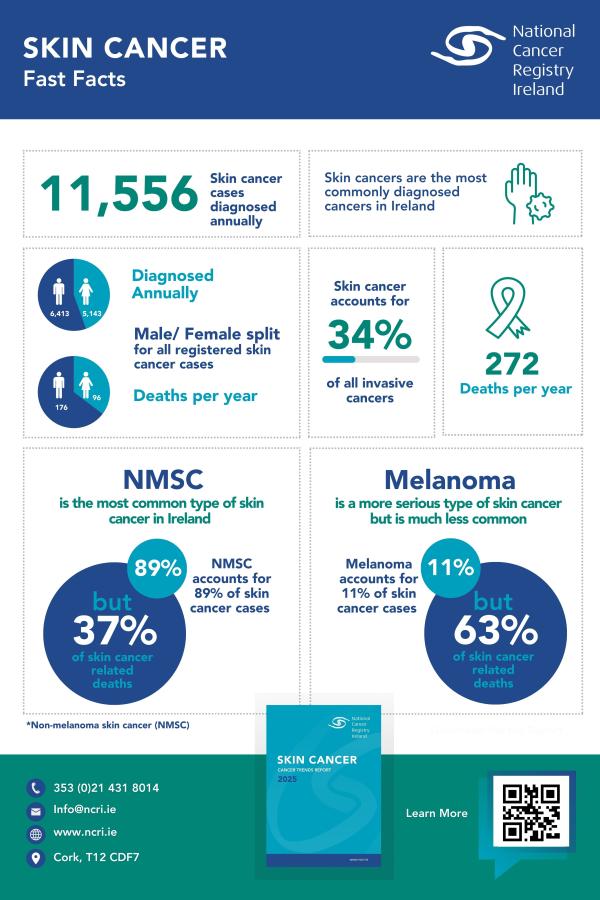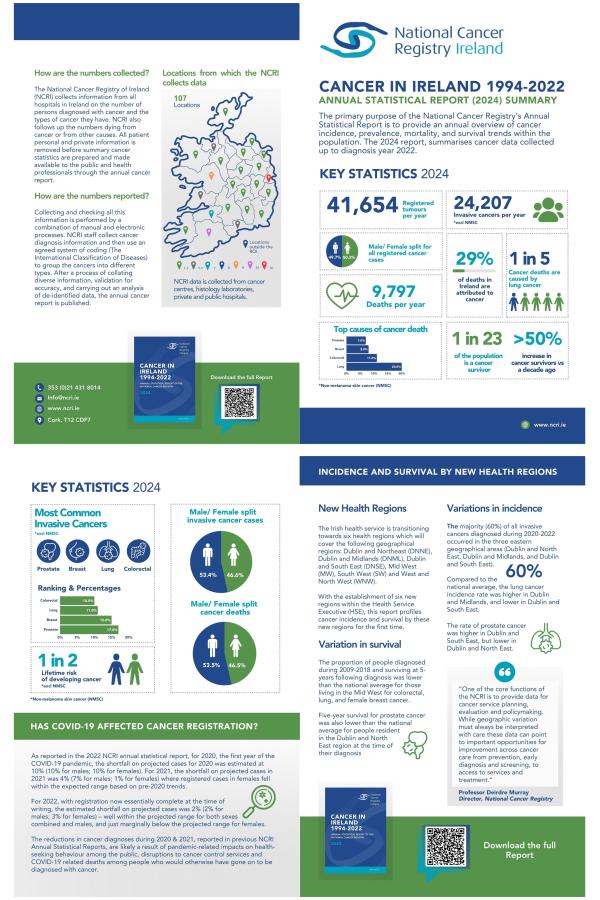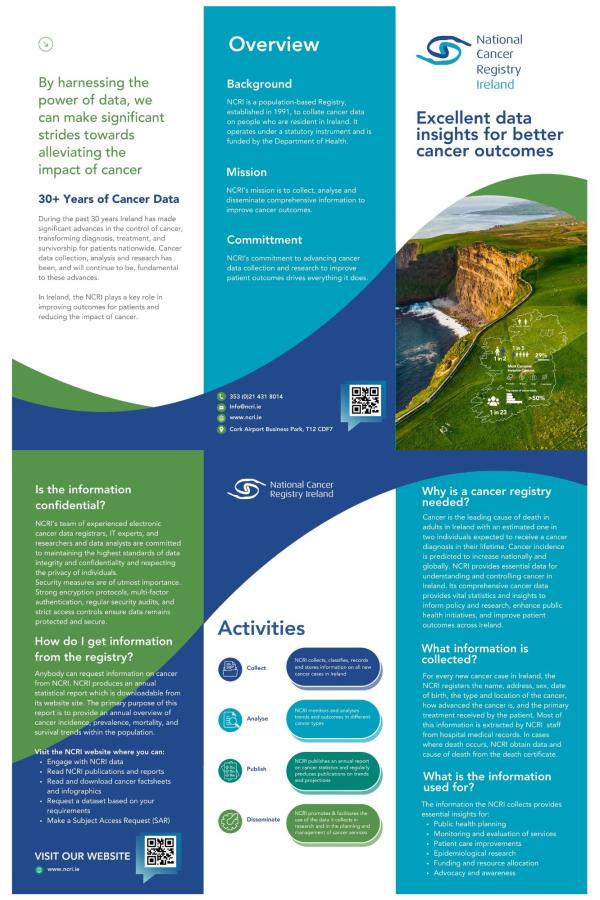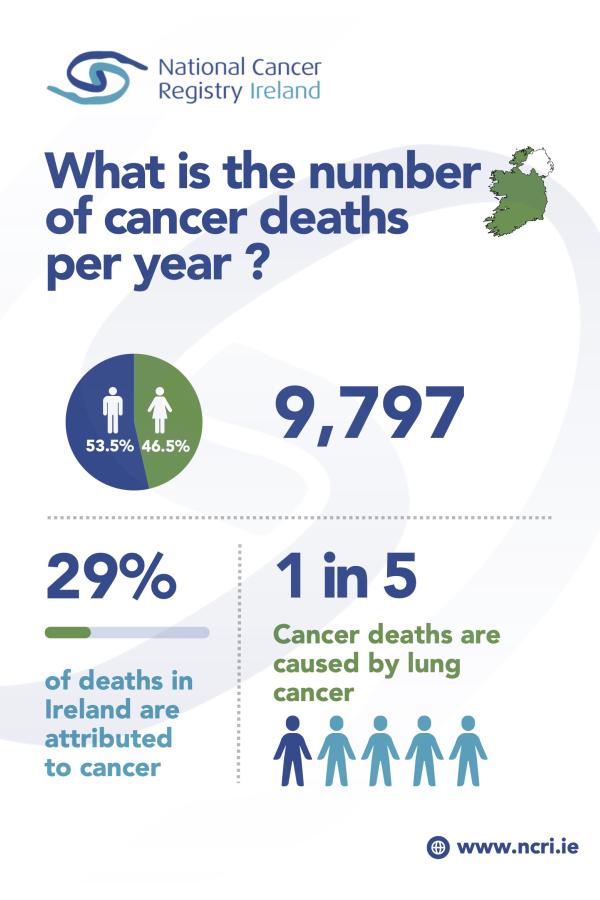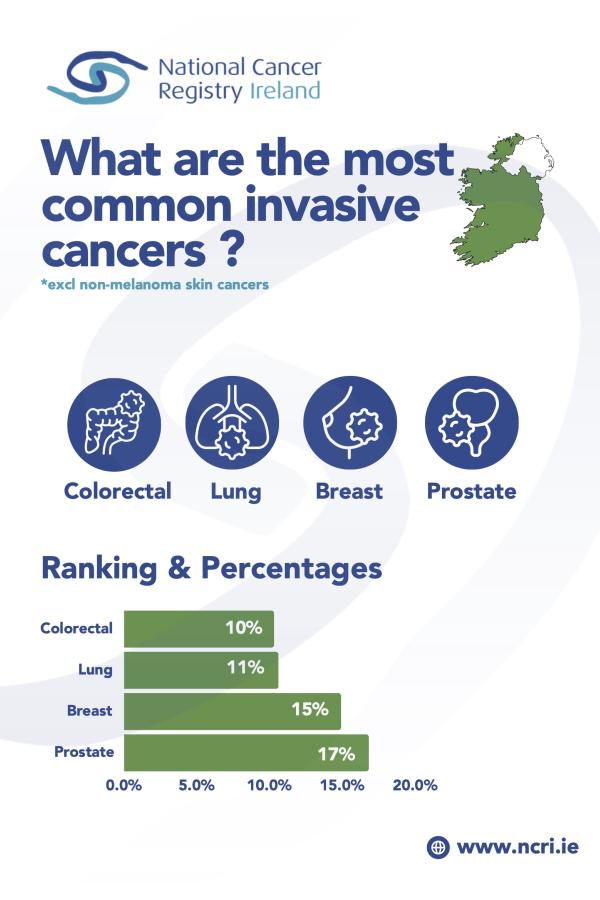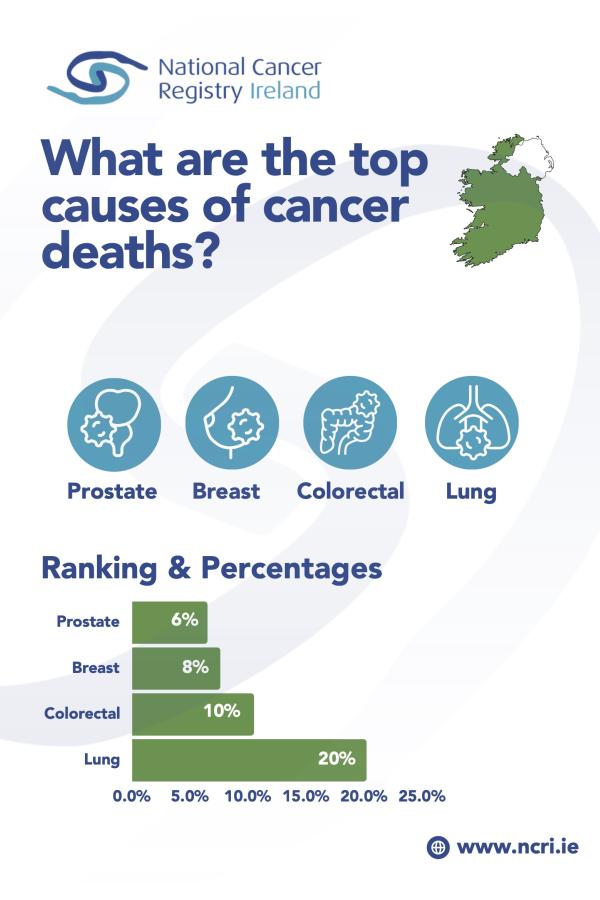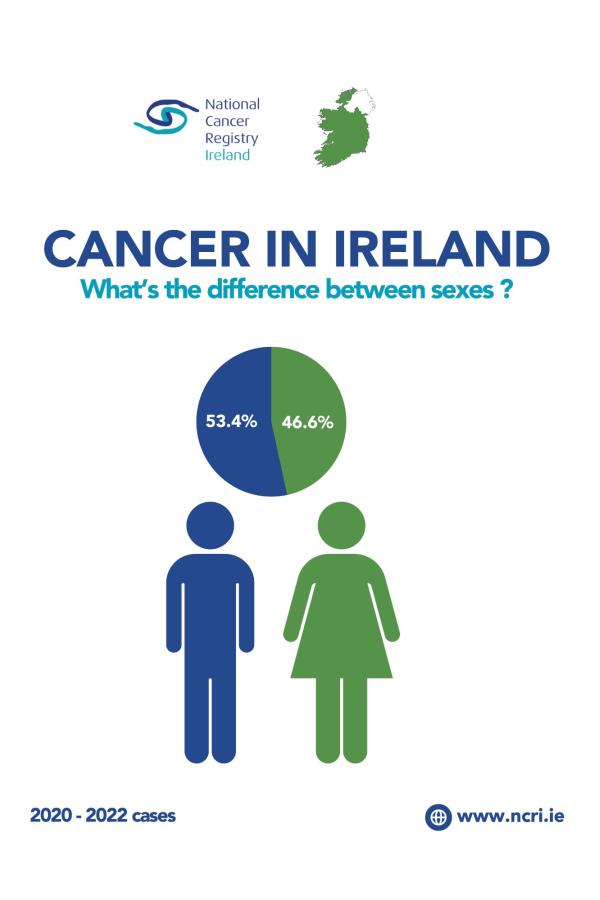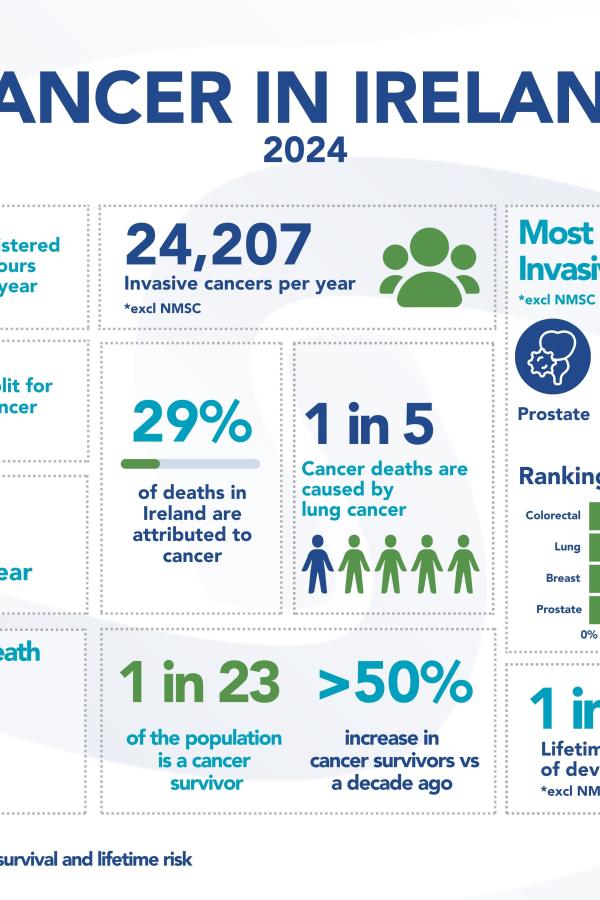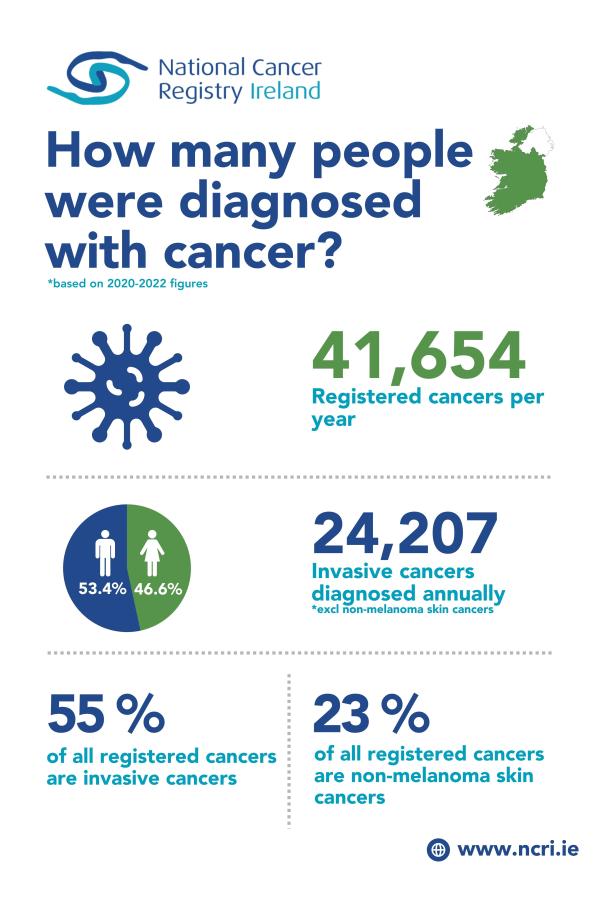Cancer in Ireland 1994-2022 annual statistical report (2024) summary
The primary purpose of the National Cancer Registry’s Annual Statistical Report is to provide an annual overview of cancer incidence, prevalence, mortality, and survival trends within the population. The 2024 report, summarises cancer data collected up to diagnosis year 2022.
Key statistics
- 41,654 registered tumours per year
- 24,207 Invasive cancers per year (excluding non-melanoma skin cancer)
- 49.7%/50.3%: The male/female split for all registered cancer cases
- 9,797 deaths per year
- 29% of deaths in Ireland are attributed to cancer
- 1 in 5 cancer deaths are caused by lung cancer
- 1 in 23 of the population is a cancer survivor
- 50% increase in cancer survivors vs a decade ago
Top causes of cancer death
- Prostate 7%
- Breast 8%
- Colorectal 11%
- Lung 20%
How are the numbers collected?
The National Cancer Registry of Ireland (NCRI) collects information from all hospitals in Ireland on the number of persons diagnosed with cancer and the types of cancer they have. NCRI also follows up the numbers dying from cancer or from other causes. All patient personal and private information is removed before summary cancer statistics are prepared and made available to the public and health professionals through the annual cancer report.
How are the numbers reported?
Collecting and checking all this information is performed by a combination of manual and electronic processes. NCRI staff collect cancer diagnosis information and then use an agreed system of coding (The International Classification of Diseases) to group the cancers into different types. After a process of collating diverse information, validation for accuracy, and carrying out an analysis of de-identified data, the annual cancer report is published.
Locations
NCRI data is collected from cancer centres, histology laboratories, private and public hospitals.
“One of the core functions of the NCRI is to provide data for cancer service planning, evaluation and policymaking. While geographic variation must always be interpreted with care these data can point to important opportunities for improvement across cancer care from prevention, early diagnosis and screening, to access to services and treatment.”
– Professor Deirdre Murray Director, NCRI
Incidence and survival by new health regions
New Health Regions
The Irish health service is transitioning towards six health regions which will cover the following geographical regions: Dublin and Northeast (DNNE), Dublin and Midlands (DNML), Dublin and South East (DNSE), Mid West (MW), South West (SW) and West and North West (WNW).
With the establishment of six new regions within the Health Service Executive (HSE), this report profiles cancer incidence and survival by these new regions for the first time.
Variation in survival
The proportion of people diagnosed during 2009-2018 and surviving at 5- years following diagnosis was lower than the national average for those living in the Mid West for colorectal, lung, and female breast cancer. Five-year survival for prostate cancer was also lower than the national average for people resident in the Dublin and North East region at the time of their diagnosis
Variations in incidence
The majority (60%) of all invasive cancers diagnosed during 2020-2022 occurred in the three eastern geographical areas (Dublin and North East, Dublin and Midlands, and Dublin and South East).
Compared to the national average, the lung cancer incidence rate was higher in Dublin and Midlands, and lower in Dublin and South East. 60%
The rate of prostate cancer was higher in Dublin and South East, but lower in Dublin and North East.
Has Covid-19 affected cancer registration?
As reported in the 2022 NCRI annual statistical report, for 2020, the first year of the COVID-19 pandemic, the shortfall on projected cases for 2020 was estimated at 10% (10% for males; 10% for females).
For 2021, the shortfall on projected cases in 2021 was 4% (7% for males; 1% for females) where registered cases in females fell within the expected range based on pre-2020 trends. For 2022, with registration now essentially complete at the time of writing, the estimated shortfall on projected cases was 2% (2% for males; 3% for females) – well within the projected range for both sexes combined and males, and just marginally below the projected range for females.
The reductions in cancer diagnoses during 2020 & 2021, reported in previous NCRI Annual Statistical Reports, are likely a result of pandemic-related impacts on healthseeking behaviour among the public, disruptions to cancer control services and COVID-19 related deaths among people who would otherwise have gone on to be diagnosed with cancer.
